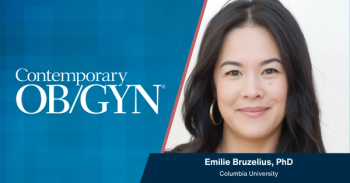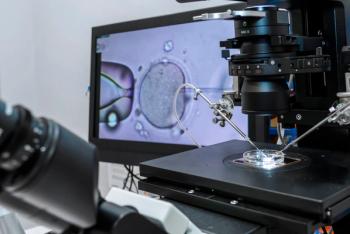
AI has brains-but it’s no MD
Artificial intelligence has uses in medicine, but will never replace doctors’ intuition.
Dr Levine is Practice Director, CCRM New York, and Attending Physician, Lenox Hill Hospital, New York. He has no conflict of interest to report in respect to the content of this article.
According to Hick’s Law, one of the few laws of experimental psychology, the time it takes for a person to make a choice is directly related to the number of possible alternatives. Simply stated, human decisions and the time required to make those decisions are functions of not only the question at hand, but how the potential answers are ordered and presented. Human decision-making is further complicated by heuristics-the succinct simple rules that we use to make decisions.1
When we add to this emotions, circumstantial evidence, and societal rules, it seems nearly impossible for anyone, let alone a doctor, to make a reproducible decision, since every situation is unique. This is why many are greatly concerned about medical students being taught by rote memorization, since not every patient fits into a memorized algorithm. Thankfully, technology has developed to help us make not only quicker decisions, but also smarter ones, and in some cases life-saving ones.
A choice example is IBM’s Watson supercomputer, which is able to interpret patient data (including unstructured text, images, audio, and video) and generate a highly accurate analysis.2 For example, Watson may be able to help select the best treatment for a patient who walks into an emergency room with vague symptoms. Watson may be able to decide when to switch therapies when there’s a lack of response.
But, Watson does not know context. For example, Watson for Oncology may determine that the treatment of a patient is futile and recommend palliation without taking into account that the particular patient is a young woman with small children.
In fact, a recent Wall Street Journal article discussed how after nearly 5 years and more than $60 million, MD Anderson Cancer Center at the University of Texas has “little to show” for their investment in Watson.3 The article notes that Watson’s “clinical trial and drug-protocol data in the system are outdated, and the pilot program doesn’t work with the hospital’s current electronic health records.”
Watson is just one example of how artificial intelligence (AI) is being utilized for clinical healthcare decisions, but much of the criticism is that Watson is being created outside of the clinical arena rather than being developed side-by-side with clinicians.4
Google’s DeepMind has announced a 5-year agreement with a UK National Health Service (NHS) trust that will give it access to patient data to develop and deploy its healthcare app, called Streams.5 According to Google, “We’ve built Streams in close partnership with NHS clinicians, who know exactly what they need.”
And on the device side of AI integration, Siemens has boldly said that their vision is “to equip a combined mammography and ultrasound device with software that not only increases the informative value of the mammogram, but also integrates data about a patient’s individual cancer risk.”6
As in the example above of the young woman with cancer, AI should be used as a clinical decision aid and not a replacement for clinical decision-making.
AI is helping us understand diseases and conditions in ways that were once impossible. For example, researchers at the University of California-San Francisco are participating in the government-funded multisite clinical trial TRACK-TBI (Transforming Research and Clinical Knowledge in Traumatic Brain Injury), for which they have developed new diagnostic and prognostic markers to help refine outcome assessments.7 The authors state that the different ways secondary brain injuries manifest is a significant obstacle to the development of new treatments. This is real-life precision medicine, because the data inputs are vague at best, and the output is a highly accurate prognosis.
Another example is the increasing phenomenon of polypharmacy-patients taking more than one prescription drug. With recent advances in genetic drug susceptibility screening, robust drug-to-drug interaction data, and improving longitudinal population data, AI is able to help us not only pick the right drugs for our patients, but also help prevent untoward outcomes from picking the wrong drug.
In 2016, it was estimated that nearly 250,000 Americans die each year from medical errors, which makes them the third-leading cause of death in the United States.8 Number 1 was heart disease and number 2 was cancer, both of which claimed approximately 600,000 lives. If we limited the scope of AI to only cardiovascular, oncology, and hospital-admitted patients, it’s plausible that AI could help save more than a million lives a year.
AI can save lives by recognizing patterns that lead to disease. Imagine a baby having its genome sequenced and the pediatrician recommending a tailored diet to help prevent atherosclerotic plaque formation in 50 years. Imagine an internist reviewing his patient’s Apple Health data on diet, sleep, and exercise in concert with genetic information and creating a treatment plan to help prevent the development of diabetes and the associated sequelae. With respect to oncology, it’s always going to be nearly impossible to address de novo mutations leading to tumors, but AI could identify risk factors and offer behavioral modifications to help reduce the risk of cancer. AI might be able to constantly survey patient-derived data on responses to medications in the acute care setting and recommend treatments that might reduce iatrogenic risks.
The key component of future healthcare may be the utilization and integration of AI to help identify inchoate problems before they manifest. AI is slowly but surely going to become part of our electronic health records, our imaging systems, and our surgical instruments. It’s important to know that AI is how we are going to reach our goals of reducing cost, increasing clinical efficiency, and most importantly, helping our patients. But AI is not going to replace a doctor’s caring touch and cannot replace that “gut instinct.”
References
1. Lewis A. The Cambridge Handbook of Psychology and Economic Behaviour. Cambridge University Press. May 2012
2. IBM. Go beyond artificial intelligence with Watson. https://www.ibm.com/watson/
3. Hernandez D. Wall Street Journal. Hospital stumbles in bid to teach a computer to treat cancer. https://www.wsj.com/articles/hospital-stumbles-in-bid-to-teach-a-computer-to-treat-cancer-1488969011
4. Herper M. Forbes. Watson may not have as much promise as hoped. https://www.forbes.com/sites/matthewherper/2017/02/19/md-anderson-benches-ibm-watson-in-setback-for-artificial-intelligence-in-medicine/#60b887133774
5. DeepMind Health. https://deepmind.com/applied/deepmind-health/
6. Siemens Healthineers. Data is the only way to meet the future needs of our patients. https://www.healthcare.siemens.com/magazine/mso-clinical-data-intelligence.html
7. University of California-San Francisco. TRACK-TBI. https://tracktbi.ucsf.edu/
8. Makary MA, Daniel M. Medical error-the third leading cause of death in the US. BMJ. 2016;353:i2139.
Newsletter
Get the latest clinical updates, case studies, and expert commentary in obstetric and gynecologic care. Sign up now to stay informed.
















